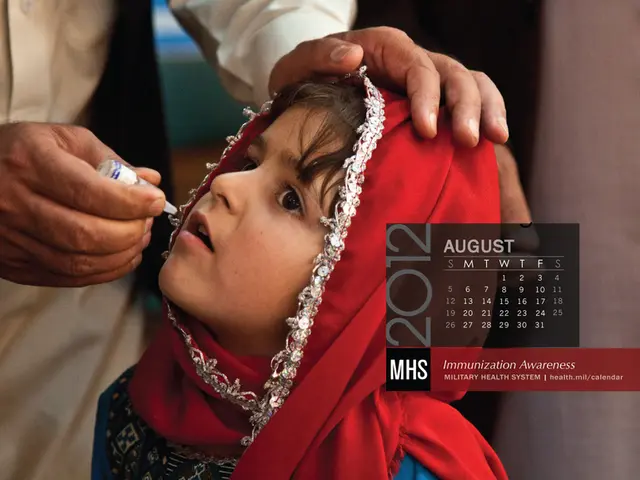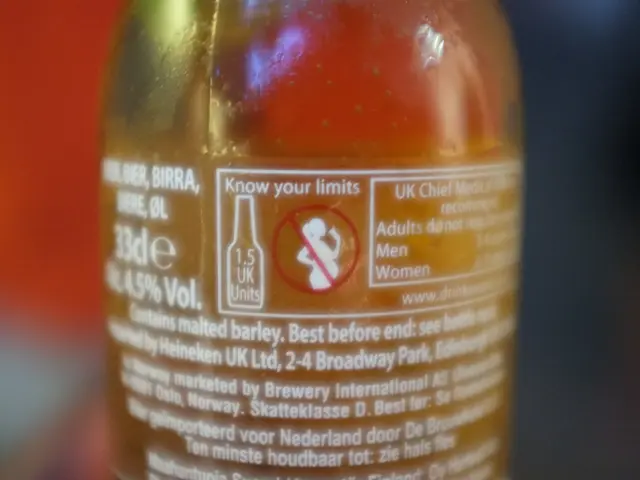Skin Lymphoma of T-cells: Visuals, Prognosis, and Additional Information
Cutaneous T-cell lymphoma (CTCL) is a type of non-Hodgkin lymphoma that targets white blood cells and produces rashes on the skin. The two most common subtypes are Mycosis Fungoides (MF) and Sézary Syndrome (SS), making up about 75% of CTCL diagnoses.
Common Symptoms
Mycosis Fungoides (MF) typically progresses through three stages:
- Patch stage: Flat, scaly, eczema-like or psoriasis-like skin lesions, often on buttocks, trunk, or breast.
- Plaque stage: Raised, thickened lesions.
- Tumor stage: Nodules or tumors on the skin.
Symptoms can mimic common inflammatory skin conditions such as eczema or psoriasis. Sézary Syndrome (SS), on the other hand, is a leukemic variant of CTCL characterized by erythroderma (widespread red, scaly skin), generalized lymphadenopathy, and the presence of malignant T cells (Sézary cells) in the blood. Other symptoms include hair loss, nail disorders, thickened skin on the palms of the hands and soles of the feet, changes to the eyelids, and depression or shame regarding the rash.
Diagnosis Methods
Diagnosis is challenging and requires clinicopathological correlation. Multiple skin biopsies may be needed, especially in early patch-stage MF, to detect characteristic epidermotropic infiltrates of small to medium-sized atypical lymphocytes. Excisional or incisional tissue biopsy is preferred for histologic examination and grading. Immunophenotyping by immunohistochemistry (IHC) or flow cytometry identifies cell surface markers to classify the lymphoma subtype. T-cell receptor (TCR) gene rearrangement testing via PCR or next-generation sequencing to detect clonal T-cell populations supports the diagnosis but must be interpreted with morphology and immunophenotypes, as clonal T cells can be seen in other conditions. Blood tests for circulating Sézary cells are critical for diagnosing SS.
Treatment Options
First-line treatment for MF is skin-directed therapies (SDT): topical corticosteroids, phototherapy (e.g., PUVA), and topical chemotherapeutic agents like mechlorethamine. If SDT is ineffective or the disease advances, systemic therapies such as interferon alpha, oral bexarotene, methotrexate, or novel antibody-based treatments are used. Other options include localized radiotherapy, total skin electron beam therapy, and hematopoietic stem cell transplantation (in advanced or refractory cases).
Treatment for SS is more systemic, often requiring combinations of extracorporeal photopheresis, systemic agents, and biologics.
Prognosis and Mortality
MF/SS are associated with increased mortality from lymphoma and infections, especially in severe disease stages. Patients with early-stage (e.g., stage 1A) MF have better outcomes and are generally managed with skin-directed therapies. People with SS may need a bone marrow biopsy to confirm the stage of their cancer.
In summary, MF and SS present with progressive skin lesions and malignant T-cell involvement, diagnosed through biopsy and immunophenotyping, and treated initially with skin-directed therapies progressing to systemic treatments or advanced therapies as needed. Regular clinical and pathological assessment is essential due to disease heterogeneity and diagnostic challenges.
If mental health is being negatively impacted due to CTCL symptoms, individuals should talk to a doctor. Researchers are exploring ways to incorporate this into treatment plans. People with CTCL may also experience depression and changes in quality of life due to the appearance of the rash.
- The Patch stage of Mycosis Fungoides (MF) can appear like flat, scaly, eczema-like or psoriasis-like skin lesions, often found on the buttocks, trunk, or breast, which are characteristic skin conditions associated with non-Hodgkin lymphomas.
- Despite its leukemic nature, Sézary Syndrome (SS) can mimic common inflammatory skin conditions such as eczema or psoriasis, causing concerns within the health-and-wellness communities focused on skin-care and skin-conditions.
- Scientific advancements in medical-conditions like CTCL have led to the development of various treatment options, including skin-directed therapies, systemic therapies, and advanced treatments for both MF and SS.
- Diagnosis of otherlymphomas like CTCL requires a thorough examination, multiple skin biopsies, and immunophenotyping to identify the cell surface markers and clonal T-cell populations associated with these medical-conditions.
- The appearance of rashes in CTCL patients can negatively impact mental health, leading to feelings of depression or shame, underlining the importance of addressing these psychological aspects as part of comprehensive cancer care and health-and-wellness practices.




